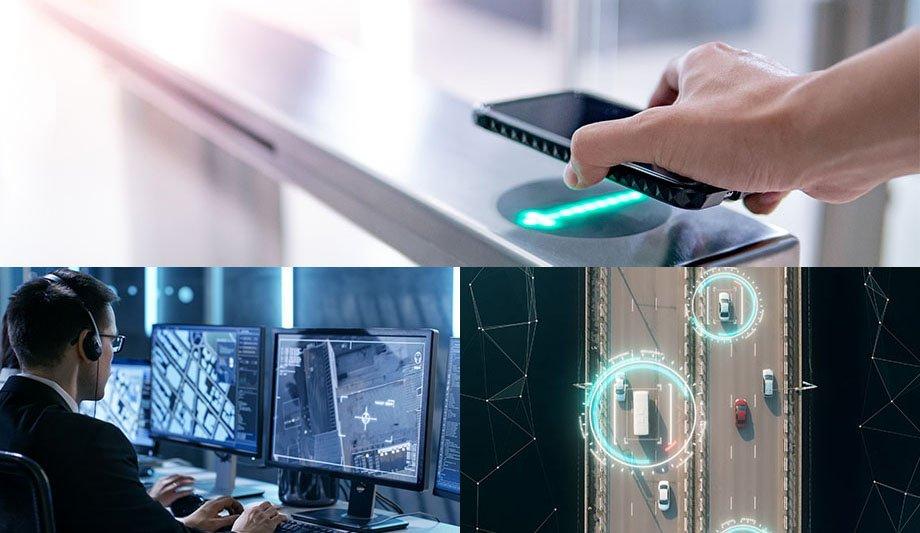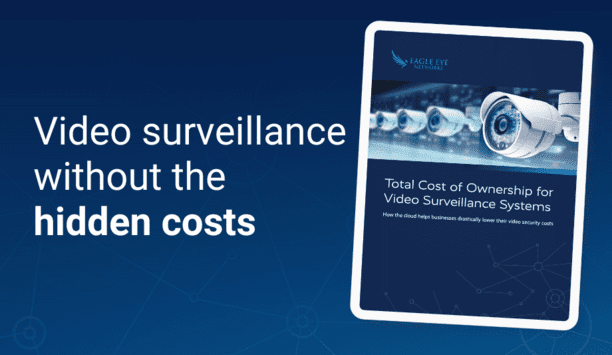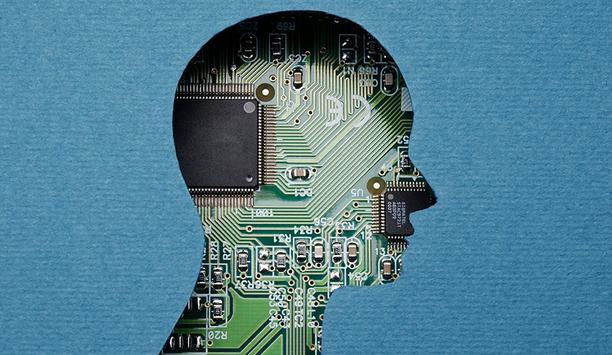How is AI changing the security market?
Editor Introduction
Artificial intelligence is more than just the latest buzzword in the security marketplace. In some cases, smarter computer technologies like AI and machine learning (ML) are helping to transform how security operates. AI is also expanding the industry’s use cases, sometimes even beyond the historic province of the security realm. It turns out that AI is also a timely tool in the middle of a global pandemic. We asked this week’s Expert Panel Roundtable: How is artificial intelligence (AI) changing the security market?
AI is fundamentally changing the core value proposition of security systems. AI-based solutions and cameras go beyond security to capture valuable marketing and sales transaction data, analysing customer patterns and behaviour. AI enables us to “see” in new ways. It’s impossible for humans to consume and accurately monitor the vast amount of video streams and other data available at most businesses, so AI is arriving at a time when we need it the most. Objects and actions can be identified, classified and organised so that humans can focus on what matters. If there’s a return shoplifter in the pain reliever aisle, it can alert you. If people never spend time looking at that new display, perhaps it needs to be reconfigured? AI can take otherwise unmanageable reams of data and turn it into actionable information. It’s a new tool that is nothing short of revolutionary for our industry.
While AI has become a household term, it is far from being a household reality, since machines are thankfully not yet capable of thinking or acting like humans. However, they are really good at combing through huge amounts of data to provide deeper insights to help humans make informed decisions more quickly and efficiently. Machine learning (ML), a subset of AI, uses data to help computers find problem solutions without being explicitly programmed. In the security sector, we are seeing great results with automatic license plate recognition (ALPR) systems that employ machine learning to recognise license plates from different countries, states, or provinces because they’re more efficient at identifying ever-expanding numbers of inputs. ML-based solutions in a VMS can bring significant operational benefits. Video presents a huge amount of complex, unstructured information and making sense of it, with video analytics for example, could help solve many issues.
The definition of artificial intelligence (AI) is having machines perform tasks that normally require human intelligence on their own without any manual intervention. Apply AI to security and now you have an incredibly powerful tool that allows you to operate proactively rather than reactively. AI communicates anomalies and other suspicious activity to you and your security team before an incident occurs. It removes the guesswork out of daily tasks, reduces human error, and makes it easier for owners and operators to maximise their security systems and manage properties. AI can improve an organisation’s insider threat programme by highlighting anomalous behaviour that the security team may need to investigate and take action on. It also allows for better use of resources and, in today’s unprecedented times, can help manage facility occupancy to ensure workspace controls for proper physical distancing and deep cleaning.
AI is particularly useful in gathering and processing data from disparate silos, to rapidly establish relationships between different data sources and derive predicted behaviour. This is useful in monitoring and comparing different facets of security, such as access control, video surveillance and intruder systems, to compile an accurate view of situational security. Of course, an important use of AI is in advanced video surveillance, which generates huge amounts of complex and often unstructured data. Making sense of all this in a timely manner is one of the greatest strengths of AI. It has enabled greater and more accurate use of technology such as facial recognition and gait analysis at the edge of the network, to drive decision making and automatically raise alarms. AI systems have also raised the bar in terms of end-user expectations, considering that smartphones already employ an impressive degree of security intelligence (including facial recognition).
AI can have a significant, positive effect for security professionals, but it must never be seen as a viable replacement for human intelligence. AI and its subsets – machine and deep learning – are excellent for the automation of manual tasks and improvement of operations, but the value a human provides should not be underestimated. Deep learning components of security analytics are vital in helping to reduce the burden on overworked or understaffed security teams; it can filter out potential alerts and only flag those which require closer analysis. This lets staff add value elsewhere – only needing to dedicate their attention to a handful of alerts. Plus, the elimination of false alarms means operators will take each threat seriously – so, teams are safe in the knowledge that operations are running as efficiently as possible.
Artificial intelligence has changed our lives in the way we interact with our automobiles and our kitchen appliances. The security industry is no exception. Today’s enterprise security systems include hundreds to thousands of cameras, making it virtually impossible for a few people in a security operations center or monitoring facility to handle all the alarms the cameras generate. The problem is made worse as more than 95% of alarms are false, the result of an animal or blowing leaves moving across a camera’s field of vision. AI offers a solution. After years of development and training, similar in many ways to how the human brain learns, AI-based software can accurately detect humans and vehicles while ignoring the rest. Now, more than 90% or more of harmless activities never become alarms. Monitoring center operators are more effective and efficient. And AI-based software comes with a bonus – it continues learning after installation.
AI is changing the security market in several important ways. Video cameras have become comprehensive data sensors that can detect objects and their attributes with a high degree of accuracy. If a person shows up at a door, I can get an alert, while any vehicles driving by are ignored. This added intelligence enables users to perform detailed forensic reviews in seconds, searching through vast amounts of video for specific attributes, such as a person wearing a red shirt. False alarms due to wind, rain, and shadows have been largely eliminated. AI also lets us rapidly respond to new requirements. We already knew how to detect a face, so it was straightforward to tweak that algorithm to detect properly worn face masks. AI enables us to confidently monitor social distancing and occupancy. This ability to adapt a system to the needs of the moment is revolutionary.
Previously, the use of AI and biometrics in entrance control was typically reserved for the highest security applications, due to the bigger budgets required. Now, these kinds of integrations are more common, being used in a broad range of applications. Unsurprisingly, more recently, increasing numbers of customers are seeking entrance control solutions which allow authorised users to gain access without them having to touch anything, while still retaining the physical security provided by a turnstile. In response to this, IDL continues to work alongside a number of the best AI and biometric systems developers in the world, to ensure that we can offer a complete integrated entrance control solution. One of these partners is a UK-based deep learning AI facial recognition pioneer. We expect AI to increasingly feature on the wish lists of security managers and those working in facilities management, when procuring entrance control.
Artificial intelligence is the future of remote CCTV and video monitoring. AI visual recognition software can now analyse a camera image in seconds and interpret the difference between alarm triggers such as vehicles, tree movement, animals and weather and an intruder or someone loitering. Furthermore, AI continuously learns, so in the case of video monitoring, it learns about site-specific false alarm triggers, thus improving accuracy even more with time. Emerging technologies such as AI video camera analytics allow you to improve insights by tracking actions and behaviours throughout organisations that will automate staff visitor flow, time and activity, thus promoting efficiencies, savings and site-wide security. This technology can give businesses a refined automated service, while continuously learning to provide new insights and trend analysis.
Modern AI chips are getting faster and more affordable, ushering in a new era of analytics and allowing for faster processing at the edge. Users can now not only detect people entering unauthorised spaces, but they can track them in real time and make sense of the complex behaviours people do. AI is enabling behavioural analytics, which is giving us more and more information and allowing users to increase sales conversions in a retail store, for example, or to manage inventory. COVID-19 is shifting AI even further, beyond the security market, as the uses for video analytics are assisting businesses with reopening procedures. There is an increased demand for occupancy management and social distancing solutions – all processes that can be optimised and deployed into a variety of industries through the use of smart cameras.
In banking security, the biggest influence we are seeing is in applying AI and a risk-based approach to help manage security vulnerabilities and detect and predict threats before fraud occurs. Even though in-person banking has decreased amid the pandemic, the importance of physical security in conjunction with mobile/online security cannot be overlooked. The physical infrastructure of branches is changing, with in-person services being replaced by more ATMs and kiosks, both of which require security. AI is key in detecting behaviour and profile deviations that may otherwise go unchecked, allowing banks to leverage and identify global fraud trends and take action before being compromised. While it doesn’t negate the need for human interaction, the two can work together and cross-check for errors and help augment each other’s capabilities.
Editor Summary
More than a buzzword, artificial intelligence (AI) is increasingly becoming part of our everyday lives. In the security market today, AI is expanding our use cases, making technologies more powerful and saving money on manpower costs – and today represents just the beginning of what AI can do for the industry. What it will never do, however, is completely take the place of humans in operating security systems. There is a limit to how much we are willing to turn over to machines – even the smartest ones.
- Related links
- AMAG CCTV software
- AMAG Access control software
- Genetec CCTV software
- Genetec Access control software
- IDL Access control software
- TDSi Access control software
- TDSi CCTV cameras
- TDSi CCTV software
- TDSi Access control systems & kits
- Verint CCTV software
- AMAG Access control readers
- TDSi Access control readers



















